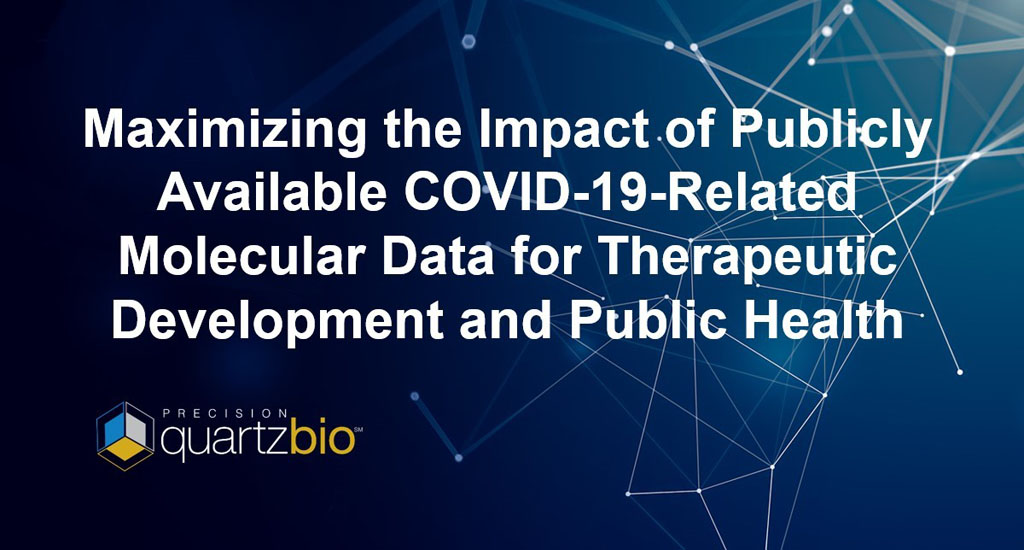
April 28, 2020 — COVID-19 is at the forefront of many research and development agendas. How can the integration of publicly available data help accelerate these efforts? The QuartzBio team is building and making available a unified SARS-CoV-2 / COVID-19 data ecosystem to support our own work and that of the broader research community. In the midst of the global pandemic, research and development teams face unprecedented operational hurdles affecting data generation.
QuartzBio: COVID-19-Related Data Aggregation Initiative for Drug Development
In the midst of the global COVID-19 pandemic, research and development teams face unprecedented operational hurdles affecting data generation. Potential economic constraints exacerbate the current challenges and yet teams still have clear mandates to sustain progress. This is nowhere more clear than for the myriad of groups targeting COVID-19-related therapeutic, monitoring, or prevention strategies. One bright spot is the opportunity to leverage existing, publicly available data around MERS, SARS, SARS-CoV-2, and COVID-19 – and this is just scratching the surface.
In recent years, we’ve seen strategic organizations more purposefully incorporating public data sources to efficiently generate and test hypotheses with data-driven and scientifically-informed approaches. Applications include re-purposing candidates for target pathways or identifying combination therapies. With that in mind, our team is undertaking an effort to create a unified SARS-CoV-2 / COVID-19 data ecosystem as a key tool to help the scientific community win this once in a generation fight.
This data asset will sit alongside TCGA, CCLE, 1000IBD, ADNI and other data assets already integrated within QuartzBio’s data integration, analytics and collaboration platform. We’re focusing our enrichment efforts on adding relevant ‘omics data to support our own research and to make this ecosystem available to the broader research community.
Building a comprehensive and fully integrated COVID-19 data set within the existing QuartzBio platform will help answer questions that no single data set is equipped to address – such as:
What are the relative expression levels of ACE2 and TMPRSS2 and my drug target of interest across different tissues and patients?
What is the impact of interferon beta on infected tissues?
How do different model systems respond to coronavirus infection compared to humans?
Consolidating previously isolated data sets in a comprehensive platform of integrated data maximizes their true potential to help answer the questions above, and drive insights impacting global public health.
In total, this public data ecosystem has greater than 10 billion data points that can be easily accessed via API or through an intuitive user interface. Dashboards can be quickly created and shared for exploring signatures, targets and indications in this unified data ecosystem. For additional context, sponsor specific and uniquely identified data sets can be integrated alongside existing data assets to create your own personalized “Precision Medicine Drug Development Engine”.
With the unique global research environment created by the pandemic, a wealth of data is being released that would normally never be shared. The challenge this situation presents is that the normal systems we rely on to analyze data are not optimized to leverage the full potential of these disparate data sources. QuartzBio is excited to be creating a truly integrated data asset that will tie that data together in a way that enables meaningful insight generation.
Author: Scott Marshall, PhD | Managing Director | QuartzBio, Part of Precision for Medicine

